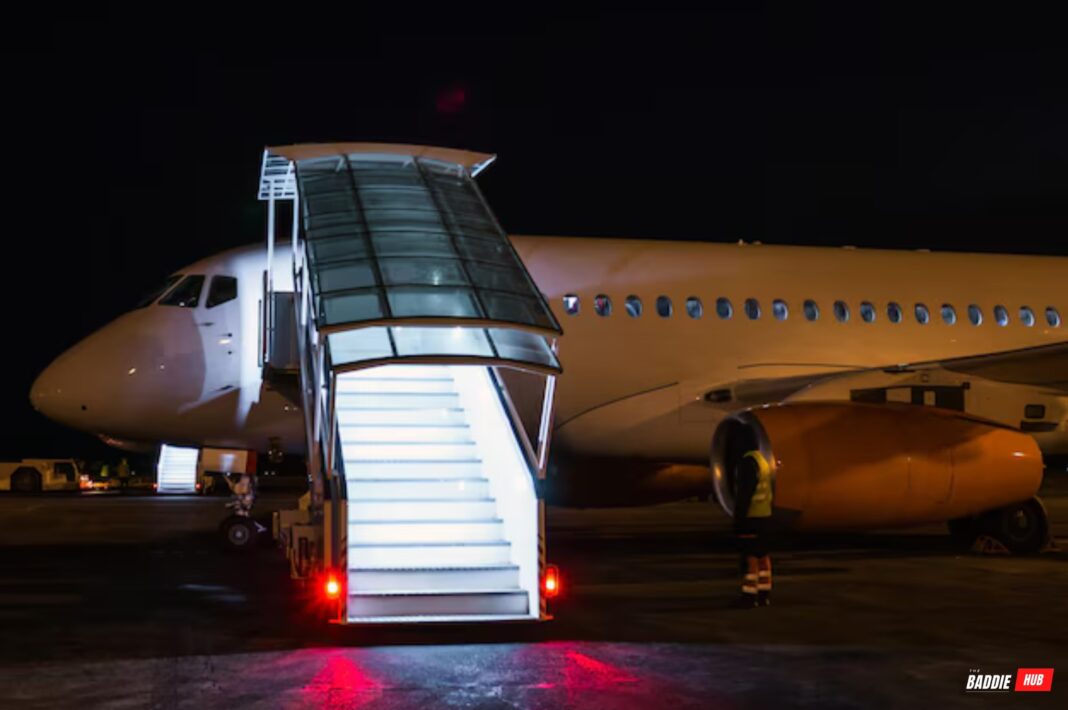Delta Flight DL275 Diverted LAX! Due to a serious engine malfunction, Delta Air Lines flight DL275 was, as of today, bound for Houston but is now diverted to Los Angeles International Airport (LAX). This has created quite a stir in the airline industry due to questions concerning safety waypoints, real-time diagnostics, as well as onboard technology designed to mitigate emergencies.
As we are about to analyse in depth, all of the timelines of the event, rationale beyond the diversion, experiences of the passengers, as well as how contemporary aviation deals with such scenarios.
✈️ How Is Delta Flight DL275 Scheduled?
Delta Flight DL275 is one of the international flights Delta Air Lines operates, and for some reasons, it is no longer clear if the destinations are Europe or Asia. As is customary, DL275 took off according to schedule and was expected to have a transpacific or transatlantic flight.
The flight has a Boeing 777 scheduled which is renowned for its efficiency in long transatlantic travels and with its dual-engine capabilities. Moreover, these types of aircraft have sophisticated monitoring systems which enhance the chances of detecting any anomalies.
⚠️ What Went Wrong: The Alerts from the Engine
Delta Flight DL275 Diverted LAX About four hours into the flight, the Engineering Indication and Crew Alerting System (EICAS) alert issued some notifications on twenty vital systems of the plane which are continuously monitored. The alerts suggested:
- Malfunctioning of engine number two
- Excessive temperature rise
- Minor throttle dependent engine oscillations
For safety reasons, the flight crew decided to divert the flight to the nearest major airport which was Los Angeles International Airport (LAX).
The pilot, trusting the accuracy of the alerts and systems in place, informed the passengers about the decision to land and ensured them that while the situation was non-critical, it required an unscheduled landing.
🛬 Emergency Protocol: Safe Landing at LAX
Delta flight DL275 commenced an emergency descent and positioned LAX Air Traffic Control for priority landing, notifying emergency services and ground personnel to prepare ahead for the plane’s landing in locked down Restricted Airspace.
Key Moments:
- Decision time for diversion: approximately 4 hours after takeoff
- Safe landing time at LAX: Approximately 90 minutes after the diversion decision.
- Number of boarding passengers: Approximately 250.
- Injuries, medical occurrences: None reported
The crew performed an emergency landing that can be characterised as textbook. The aircraft was able to taxi to the gate under its own power, and evacuation slides were not needed.
👨✈️ Crew and Technical Actions
Post-landing, the aircraft was inspected by Delta personnel. The problem appeared to be a thermal fault within the fuel control system of the engine that could have resulted in failure of the engine performance if left unchecked.
In conjunction with Delta technicians, Boeing-qualified engineers made the following decisions:
- The aircraft was to be grounded pending thorough investigations.
- Passengers who were affected were to be flown via reliever flight.
- Data logs were to be examined for FAA and in-house use.
This incident response from Delta Flight DL275 Diverted LAX demonstrates how airlines leverage predictive maintenance technologies and smart aviation to enable real-time incident response.
🧠 Aviation Technology: The Modern Protection System
The case study of DL275 demonstrates the need for new avionics:
Real-Time Engine Monitoring
EICAS and ACMS (Aircraft Condition Monitoring System) provides engine monitoring and enables pilots along with ground crews to receive:
- Real-time notifications
- Engine metrics
- Predictive failure notifications
Satellite Communication
Ground engineers can communicate instantly with Delta, allowing the technical teams to prepare as the plane descends.
Decision Support Software
The aircraft’s modern software assists in decision simulation that calculates risks, remaining fuel, fuel availability, and airport status for various decisions like flight continuation or diversion.
🧳 Delta Responds and The User Experience
Delta Flight DL275 Diverted LAX The vast majority of users commended the professionalism exhibited by crew members, noting the cadence of announcements along with the composed nature of the flight attendants. Delta offered:
- Refreshments while waiting for rebooking.
- Hotels for stranded passengers.
- Vouchers or miles for the inconvenience suffered.
Rebooking or rescheduling were done for those who needed it.
❓ Q&A: Everything Important Regarding the Diversion of DL275
Q1: Was there an actual engine failure that led to the need for the plane to be diverted?
A: No. It was a precautionary diversion based on data being reported. The engine itself was operational but was not showing normal readings.
Q2: Was the aircraft in immediate danger?
A: There was no threat that was out of the ordinary. There is a protocol which consists of avoiding any anomalies to prevent escalation that must be followed.
Q3: Why LAX and not another airport?
A: LAX was the nearest major international airport that could accommodate a Boeing 777, both in terms of scale and having the necessary technical and safety infrastructure.
Q4: What happens after such an event?
A: An investigation is conducted by the airline in collaboration with the engineers and governing authorities. The involved aircraft are put on hold until they receive clearance. The passengers are provided accommodations and flights are rebooked.
Q5: Are aircraft designed for such emergencies?
A: Absolutely. Modern commercial jets have the capability of operating on one engine and are designed with multiple layers of safety redundancy.
📝 Conclusion
Delta Flight DL275 Diverted LAX is a clear example of how well-trained aviation personnel work together to maintain the safety of passengers. Modern aerospace engineering works in the shadows, but during the Delta Flight DL275 incident, where the ability relied on the crew’s decision-making and the aircraft’s systems capability, every conceivable system worked in concert to manage the flight safely.
The growing dependence of travellers on air travel for international linkages emphasises the need for transparency; DL275’s diversion demonstrates readiness and innovation on both a systemic and airport-wide basis. Though disruptions to air travel are not favoured, their effective handling provides renewed faith and underscores the exceedingly high level of safety associated with commercial aviation.


